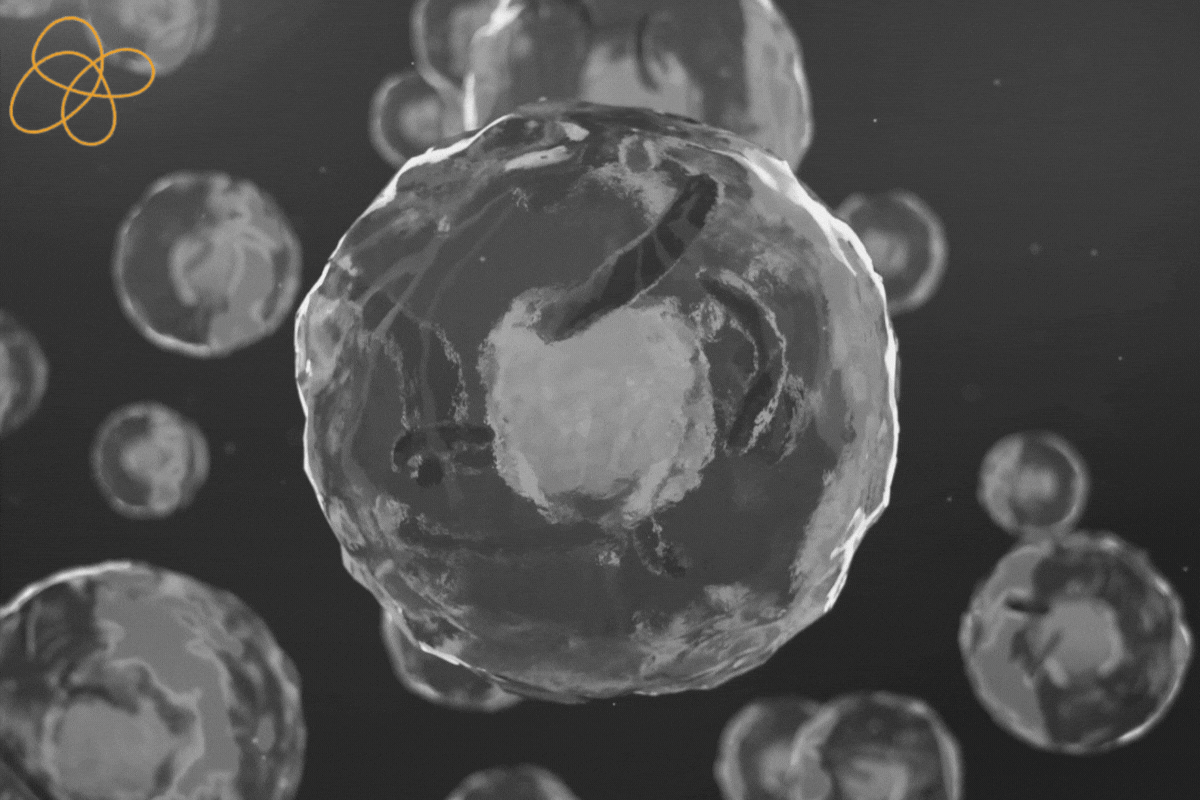Boldly Developing Advanced Therapies: Your Guide to Collaborating with the FDA in the Age of Biotech Innovation
Regulatory CMC challenges in the Development of Advanced Therapy products
Advanced therapy products (ATPs), including gene therapies, cell therapies, and tissue-engineered products, represent a promising area of research and development for treating many challenging diseases. However, their complex nature poses significant regulatory and scientific challenges in their development and manufacturing, particularly in the chemistry, manufacturing, and controls (CMC) aspects of their regulation.
Some of the key regulatory CMC challenges in the development of advanced therapy products are:
- Quality control: ATPs are highly complex and require stringent quality control measures throughout their manufacturing process. Ensuring the quality, purity, and potency of the final product is a major challenge, as small variations in the manufacturing process or contamination can significantly affect the product’s safety and efficacy.
- Characterization: ATPs are characterized by their biological activity and cannot be fully characterized using traditional analytical methods. Developing appropriate analytical methods to assess product quality and stability is a major challenge in the development of ATPs.
- Stability: ATPs have a limited shelf-life, and their stability during storage and transportation is a significant challenge. Developing effective stabilization strategies and long-term storage conditions is essential for ensuring product quality and efficacy.
- Scalability: Many ATPs are currently manufactured using manual processes, which are not scalable to meet the demand for larger clinical trials or commercialization. Developing scalable manufacturing processes without compromising product quality or efficacy is a major challenge.
- Comparability: ATPs are highly complex and can vary significantly in their composition, even between batches manufactured using the same process. Demonstrating product comparability between different batches or manufacturing sites is a major challenge.
- Regulatory oversight: Regulatory agencies have limited experience in reviewing and approving ATPs, and the lack of standardized guidelines for their development and regulatory oversight poses significant challenges for developers.
CMC guidance to follow to develop an advanced therapy
Regulatory agencies, such as the US Food and Drug Administration (FDA) and the European Medicines Agency (EMA), have issued guidance documents to assist developers in the chemistry, manufacturing, and controls (CMC) aspects of developing advanced therapy products (ATPs). The specific guidance documents to follow may vary depending on the type of ATP and the regulatory jurisdiction, but here are some examples of guidance documents that may be applicable:
- FDA Guidance for Industry: Chemistry, Manufacturing, and Control (CMC) Information for Human Gene Therapy Investigational New Drug Applications (INDs): This guidance provides recommendations for the CMC information required for INDs for human gene therapy products, including information on the manufacturing process, product characterization, and stability testing.
- EMA Guideline on Quality, Non-Clinical and Clinical Aspects of Gene Therapy Medicinal Products: This guideline provides recommendations for the quality, non-clinical, and clinical aspects of gene therapy medicinal products, including requirements for the manufacturing process, product characterization, and comparability.
- FDA Guidance for Industry: Potency Tests for Cellular and Gene Therapy Products: This guidance provides recommendations for the potency assays that should be used to evaluate the biological activity of cellular and gene therapy products.
- EMA Guideline on Human Cell-Based Medicinal Products: This guideline provides recommendations for the quality, non-clinical, and clinical aspects of human cell-based medicinal products, including requirements for the manufacturing process, product characterization, and comparability.
- FDA Guidance for Industry: Chemistry, Manufacturing, and Controls (CMC) Information for Human Somatic Cell Therapy Investigational New Drug Applications (INDs): This guidance provides recommendations for the CMC information required for INDs for human somatic cell therapy products, including information on the manufacturing process, product characterization, and stability testing.
These guidance documents are intended to provide developers with a framework for developing ATPs that meet regulatory standards for safety, purity, and potency. Following these guidelines can help ensure that ATPs are developed and manufactured in a consistent and reliable manner, and can increase the chances of regulatory approval for clinical trials and commercialization.
Biggest compliance concerns in the Development of Advanced Therapy products, and how a Sponsor may address them?
Developing advanced therapy products (ATPs), including gene therapies, cell therapies, and tissue-engineered products, involves complex regulatory requirements and compliance concerns. Here are some of the biggest compliance concerns in the development of ATPs and how to address them:
- GMP compliance: good manufacturing practice (GMP) compliance is critical for ensuring the safety, purity, and potency of ATPs. GMP regulations require that ATPs are manufactured in a controlled environment with strict quality control measures. To address this concern, developers should establish robust GMP processes and quality management systems, conduct regular audits and inspections, and document all manufacturing processes and controls.
- Risk management: ATPs carry unique safety and efficacy risks, and developers must have effective risk management strategies in place to identify, assess, and mitigate these risks. To address this concern, developers should conduct risk assessments throughout the development process, establish appropriate safety monitoring protocols for clinical trials, and have contingency plans in place for unexpected safety or efficacy issues.
- Data integrity: Accurate and complete data is essential for ensuring the safety and efficacy of ATPs, and regulatory agencies require that all data related to ATP development and manufacturing are properly recorded, stored, and managed. To address this concern, developers should establish data management systems that comply with regulatory requirements, conduct regular data integrity audits, and ensure that all personnel are trained in data management best practices.
- Regulatory compliance: ATPs are subject to complex regulatory requirements, and developers must comply with all relevant regulations and guidelines to ensure that their products are safe and effective. To address this concern, developers should stay up to date with all relevant regulatory requirements and guidelines, engage with regulatory agencies early in the development process, and seek expert advice when needed.
- Supply chain management: ATPs require complex supply chains that involve multiple vendors and partners, and developers must ensure that all parties involved in the supply chain comply with regulatory requirements and quality standards. To address this concern, developers should establish robust supply chain management processes, conduct regular audits and inspections of vendors and partners, and establish clear communication channels to ensure that all parties are aligned on quality and regulatory requirements.
What branch or division of the FDA can I talk to about developing an Advanced Therapy
If you are interested in developing an advanced therapy product (ATP) and would like to speak with someone at the US Food and Drug Administration (FDA), you can contact the FDA’s Center for Biologics Evaluation and Research (CBER).
CBER is responsible for regulating ATPs in the United States, including gene therapies, cell therapies, and tissue-engineered products. CBER’s mission is to protect and enhance public health through the regulation of biologics, including ATPs, and it works closely with developers to ensure that ATPs are safe, effective, and compliant with regulatory requirements.
To contact CBER, you can visit the CBER website at www.fda.gov/cber and look for the “Contact CBER” link, which provides information on how to contact CBER by phone, mail, or email. You can also find information on CBER’s regulatory requirements and guidance documents on the website, as well as information on the IND application process for ATPs.
It is recommended that you consult with a regulatory affairs professional or legal counsel experienced in ATP development to ensure that you have a comprehensive understanding of the regulatory requirements and procedures before contacting CBER or any regulatory agency.
In summary, developing and manufacturing advanced therapy products involves complex CMC challenges that require a multidisciplinary approach and close collaboration between regulators, developers, and manufacturers.
The development of ATPs involves complex compliance concerns that require a multidisciplinary approach and close collaboration between developers, manufacturers, and regulatory agencies. Addressing these concerns requires a proactive and diligent approach to quality management, risk management, data management, regulatory compliance, and supply chain management.




